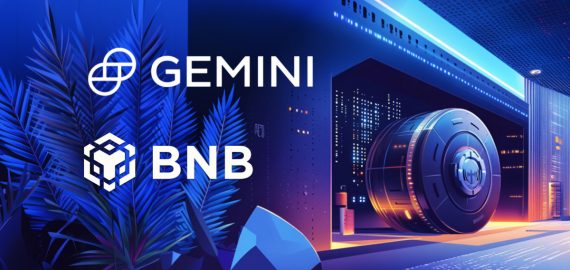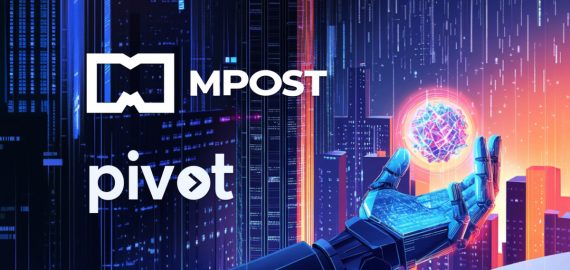Gonka: Decentralized AI That Turns Idle GPUs into Meaningful Compute


In Brief
Gonka, a decentralized AI infrastructure, aims to maximize GPU efficiency and democratize access to high-performance AI, bridging Web2 product experience with decentralized AI innovation.
Gonka is building a decentralized AI infrastructure designed to maximize GPU efficiency and democratize access to high-performance AI. Created by David Liberman, Gonka aims to transform how compute resources are used, making nearly 100% of GPU power available for meaningful AI tasks rather than wasted hashing or idle cycles. In an era where AI demand is skyrocketing, Gonka positions itself as a bridge between Web2 product experience and decentralized AI innovation.
“Crypto can learn a lot from Web2 in making products appealing to mass audiences. At the same time, Web2 can learn from crypto in infrastructure and AI decentralization,” Liberman explains.
Tackling Waste in AI and Compute
A central insight for Gonka came from observing the inefficiency in existing AI and blockchain networks.
“Many networks, like Bitcoin, overload infrastructure with useless work. We realized we could unleash this power for meaningful computation, which opens enormous potential for solving real-world problems,” Liberman notes.
This recognition drove the design of Gonka’s proof-of-work system, which aligns incentives for hardware contributors and ensures that all compute power contributes directly to AI training or inference tasks. By turning what was previously wasted effort into productive computation, Gonka unlocks the potential of decentralized AI at scale.
Easy Onboarding for Hosts
Gonka is built to be accessible, even for users with a single GPU at home.
“It’s surprisingly simple. Users can follow the Quickstart guide on Gonka.ai. For one GPU, setup is a one-click process. For larger GPU clusters, more advanced instructions are available. The goal is to make participation as easy as possible,” Liberman explains.
This ease-of-use comes from Gonka’s Web2 roots, where consumer-friendly design is paramount. Unlike many decentralized AI networks that require complex setup or deep technical knowledge, Gonka focuses on user-friendly onboarding, lowering the barrier to participation for individuals and small teams.
Web2 Meets Web3 in Infrastructure Design
Gonka was incubated by Product Science Inc., a company with deep Web2 experience working with Airbnb, JP Morgan Chase, and other enterprise clients. This background shaped Gonka’s approach to infrastructure design:
“We brought Web2 principles of performance engineering and consumer orientation to decentralized AI. The system balances three parts: consensus, API for developers, and efficient ML execution,” Liberman notes.
By prioritizing developer experience, Gonka allows AI developers to integrate seamlessly with decentralized compute, making it as easy as switching a single line of code from traditional platforms like OpenAI.
Driving Hardware Innovation for AI
Gonka also aims to catalyze innovation in AI hardware, drawing inspiration from the evolution of GPUs in Bitcoin mining.
“Our proof-of-work system aligns incentives so hardware manufacturers are motivated to innovate for AI tasks, similar to how Bitcoin drove GPU evolution. This could eventually create infrastructure larger than Big Tech’s centralized stacks,” Liberman explains.
This incentive alignment ensures that hardware improvements and AI efficiency grow hand in hand, allowing developers and researchers to access cutting-edge compute while spurring the next generation of AI-capable hardware.
The Future of Decentralized AI
Gonka’s vision extends beyond simply providing compute. By combining ease of use, performance optimization, and decentralized infrastructure, the platform seeks to democratize AI research and deployment. Small teams, independent developers, and even individual GPU owners can now participate in building and training AI models that were previously accessible only to large corporations.
“This is not just about running AI tasks; it’s about creating a network that drives innovation, improves hardware, and allows the AI ecosystem to grow in ways that were impossible before,” Liberman concludes.
With Gonka, the promise of truly decentralized, high-performance AI infrastructure is no longer a theoretical concept—it’s a reality that is already empowering developers and reshaping the AI landscape.
Disclaimer
In line with the Trust Project guidelines, please note that the information provided on this page is not intended to be and should not be interpreted as legal, tax, investment, financial, or any other form of advice. It is important to only invest what you can afford to lose and to seek independent financial advice if you have any doubts. For further information, we suggest referring to the terms and conditions as well as the help and support pages provided by the issuer or advertiser. MetaversePost is committed to accurate, unbiased reporting, but market conditions are subject to change without notice.
About The Author
Victoria is a writer on a variety of technology topics including Web3.0, AI and cryptocurrencies. Her extensive experience allows her to write insightful articles for the wider audience.
More articles

Victoria is a writer on a variety of technology topics including Web3.0, AI and cryptocurrencies. Her extensive experience allows her to write insightful articles for the wider audience.

















































